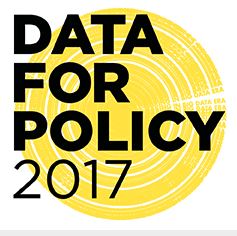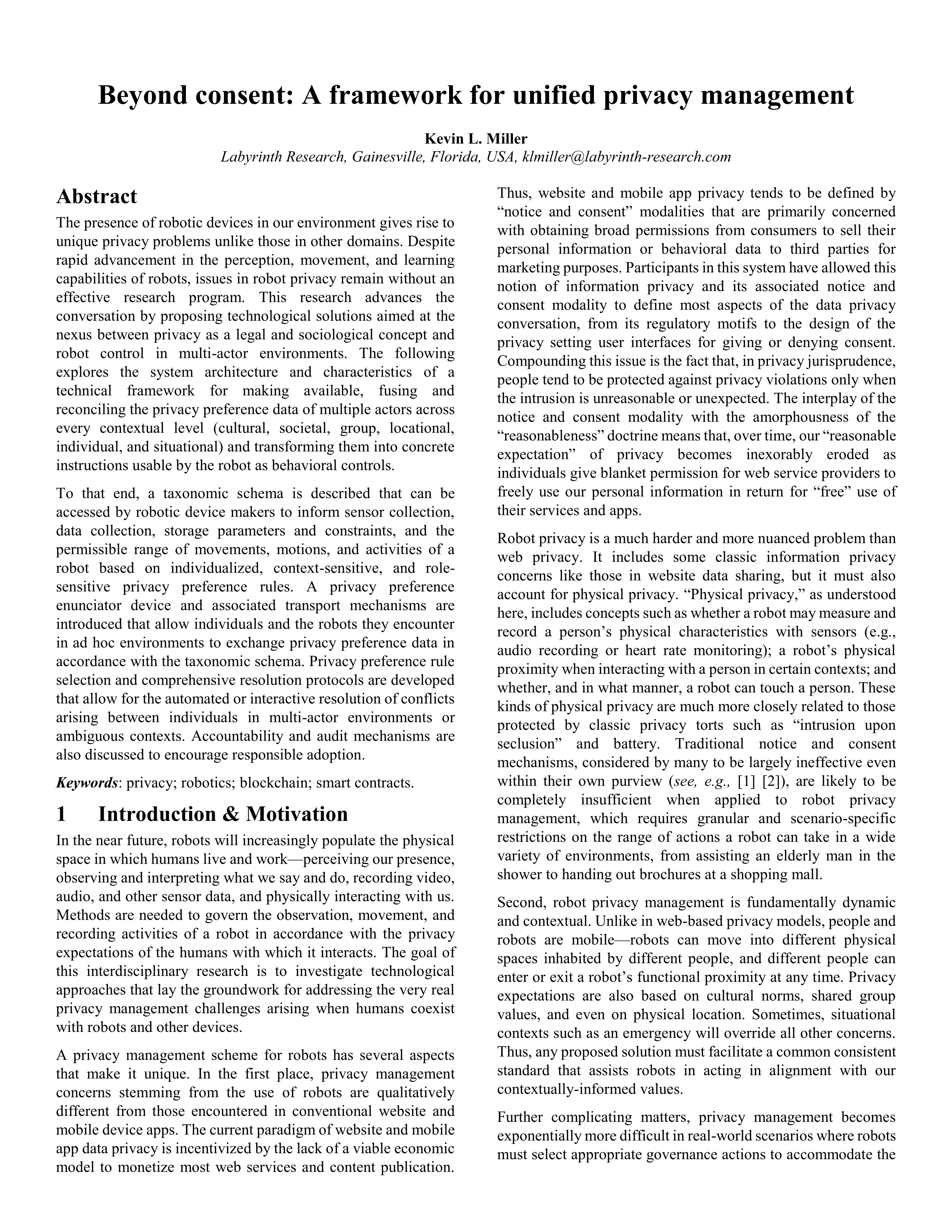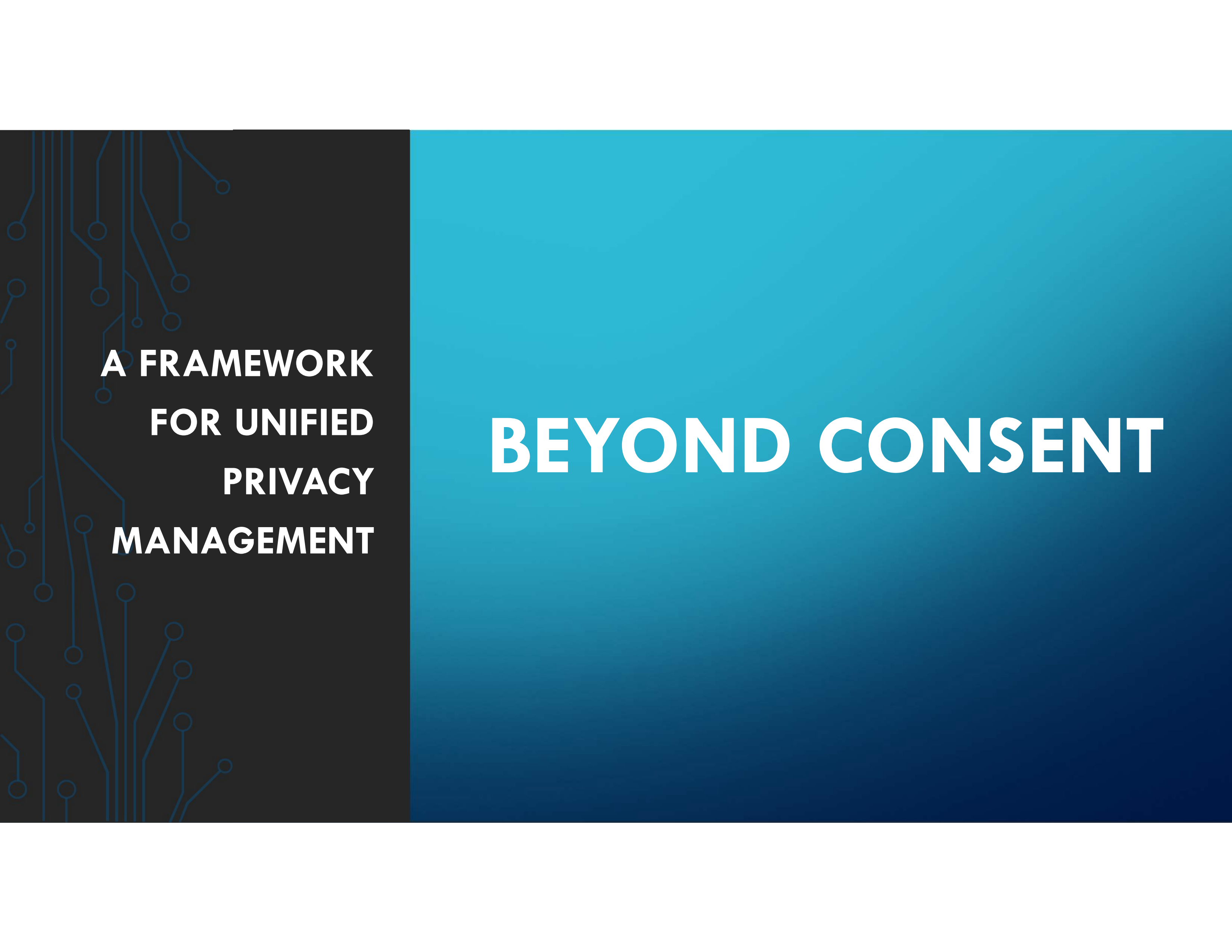Research
Privaceum's core technologies are founded on academic research into privacy architectures
Research Article
Beyond
Consent: A Framework
for Unified Privacy Management

Paper Presented at Data for Policy 2017 (Sept. 2017), London, England
This paper considers the basic robot privacy problem from an essentially cybernetic viewpoint: aligning command and control of robots with human expectations in an environmental context. We develop a reference technical architecture, or “framework,” necessarily incomplete but arrayed as a multi-pronged research agenda, to define structural concerns and implementation options that can assist in meeting the privacy challenges entailed by this new robotic environment. While predominantly a technical framework, this work uses legal and sociological understandings to design a model that exposes systemic assumptions and neutrally adapts norms to account for cultural and contextual subtleties. More specifically, the objective is to ensure that robot control functions—namely, sensor activation and recording, as well as movement and action—meet the contextually sensitive privacy expectations of individuals coinhabiting the robot's zone of influence.
Conference Presentation
Presentation:
Beyond Consent 
Presentation Slides from Data for Policy 2017 (Sept. 2017), London, England
The presentation describes the need for a new approach to privacy and the primary ideas behind our new privacy architecture. It also discusses the role of the blockchain in a new privacy architecture solution.
Research Article
Conference Presentation
A New Framework for Robot Privacy

Paper Presented at WeRobot 2017 (Apr. 2017), Yale University School of Law
The presence of robotic devices in our environment gives rise to unique privacy problems unlike those in other domains. Despite rapid advancement in the perception, movement, and learning capabilities of robots, issues in robot privacy remain without an effective research program. This research advances the conversation by proposing technological solutions aimed at the nexus between privacy as a legal and sociological concept and robot control in multi-actor environments. The following explores the system architecture and characteristics of a technical framework for making available, fusing and reconciling the privacy preference data of multiple actors across every contextual level (cultural, societal, group, locational, individual, and situational) and transforming them into concrete instructions usable by the robot as higher-level behavioral controls.
To that end, a taxonomic schema is described that can be accessed by robotic device makers to inform sensor collection, data collection, storage parameters and constraints, and the permissible range of movements, motions, and activities of a robot based on individualized, context- and role-sensitive privacy preference rules. A privacy preference enunciator device and associated transport mechanisms are introduced that allow individuals and the robots they encounter in ad hoc environments to exchange privacy preference data in accordance with the taxonomic schema. Privacy preference rule selection and comprehensive resolution protocols are developed that allow for the automated or interactive resolution of conflicts arising between individuals in multi-actor environments or ambiguous contexts. Accountability and audit mechanisms are discussed, as are trust and security models for mitigating secondary privacy harms.


